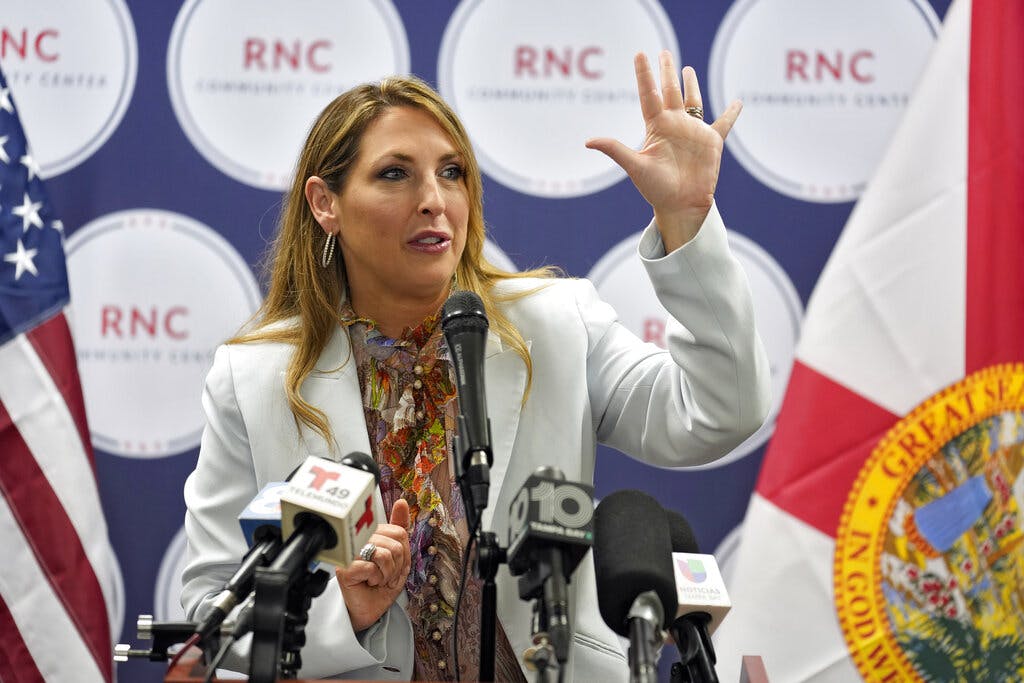GOP Launches Another ‘Autopsy,’ This Time To Examine Dismal ’22 Results
If the effort sounds familiar, it’s because the GOP did the same thing after the 2012 election, when it lost the presidency and failed to take control of the Senate.

Following a historically bad midterm performance for Republicans, the party is commissioning an autopsy to see where it went wrong, reviving memories of a post-2012 election analysis.
The Republican National Committee chairwoman, Ronna McDaniel, said that “we are gathering a diverse range of respected leaders in our movement to join together and help chart a winning course in the years to come.”
“I am thrilled that this talented group of Republicans will be shoulder to shoulder with us as we work to grow our party, hold Democrats accountable, and elect Republicans,” she said in a statement.
The Republican Party Advisory Council will consist of four members of the House — Representatives Monica De La Cruz, Carlos Gimenez, Michelle Steel, and John James — as well as an incoming senator of Alabama, Katie Britt, and a losing senatorial candidate of Arizona, Blake Masters.
Joining them will be a lobbyist and strategist, Henry Barbour; a party committee woman of California, Harmeet Dhillon; an evangelical lobbyist, Anthony “Tony” Perkins; the Virginia attorney general, Jason Miyares; a failed congressional candidate, Madison Gesiotto Gilbert; and a former adviser to President Trump, Kellyanne Conway.
Members of the council have expressed optimism about their mission and the future of the party under its current leadership, even in the face of what many see as a failure by the party to deliver in 2022.
“The success of our party depends on leaders like Chairwoman McDaniel who understand that conservative candidates who show up, listen, and put in the work to earn the trust of all voters will help our party succeed,” Mr. James said.
If this maneuver by the GOP sounds familiar, it’s probably because the party did the same thing after the 2012 election, when it lost the presidential election and failed to take control of the Senate. That effort, released in 2013, was called the “Growth and Opportunity Project.”
Compounding the sense of déjà vu, Mr. Barbour, one of the lobbyists leading the 2022 post-mortem, was also one of the authors of the 2012 post-mortem.
The authors of the 2012 report noted that the party was increasingly unpopular, losing “the popular vote in five of the last six presidential elections,” especially among growing demographic groups such Asians, Hispanics, Pacific Islanders, and African Americans, and suggested strategies to turn that around.
“Public perception of the Party is at record lows,” the 2012 report reads. “Young voters are increasingly rolling their eyes at what the Party represents, and many minorities wrongly think that Republicans do not like them or want them in the country.”
The report, commissioned by a former Republican National Committee chairman, Reince Priebus, concluded that the biggest obstacles to the party enjoying electoral success were in messaging and voter outreach.
It specifically recommended outreach to “ethnic minority voters,” championing “comprehensive immigration reform,” and becoming more “inclusive and welcoming” on social issues, saying of the final point that a failure to do so would limit the appeal to young voters.
The authors also claimed that GOP governors were the most successful part of the party, touting some of the achievements of leaders like Governor Brownback of Kansas, who “reformed the state Medicaid program to improve and expand services.”
Even in 2013, when the report was released, it was clear to some that its prescriptions were out of step with the Republican electorate — at least in the primaries.
Mr. Trump, years before the beginning of his 2016 campaign, tweeted a response to the report, saying, “New @RNC report calls for embracing ‘comprehensive immigration reform,’” adding, “Does @RNC have a death wish?”
Although Mr. Barbour has returned to work on the 2022 post-mortem, some of the authors of the 2012 analysis have jumped ship. Political strategist Sally Bradshaw left the party in 2016 after working on Governor Bush’s primary bid that year.
Mr. Trump’s vision of the future of the party won out in 2016, despite the fanfare around the new plan and the desires of the party establishment to nominate someone else.
Since Mr. Trump ascended to lead the party, the GOP has posted some gains among minorities, especially Hispanic and Asian voters; however, it hasn’t been enough to deliver consistent electoral success.
Young voters rejected the GOP resoundingly in 2022, especially in areas where social issues — particularly abortion — were central to the Democratic platform.
It’s unclear the extent to which the party will heed any advice offered by the council, but what is clear is that there is turmoil brewing within the national committee that could present an obstacle to any top-down shift in party messaging.
Two allies of Mr. Trump are eyeing a challenge to Ms. McDaniel, including the MyPillow CEO, Mike Lindell, who has already announced his bid, and Congressman Lee Zeldin.
Aside from the issue of internal party leadership, Republicans will also be forced to reckon with their primary electorate, a group that squarely rejected the leadership’s vision for the party in favor of Mr. Trump in 2016 and could do so again.
___________
Correction: The governor of Kansas is Sam Brownback. An earlier edition misstated his position.

